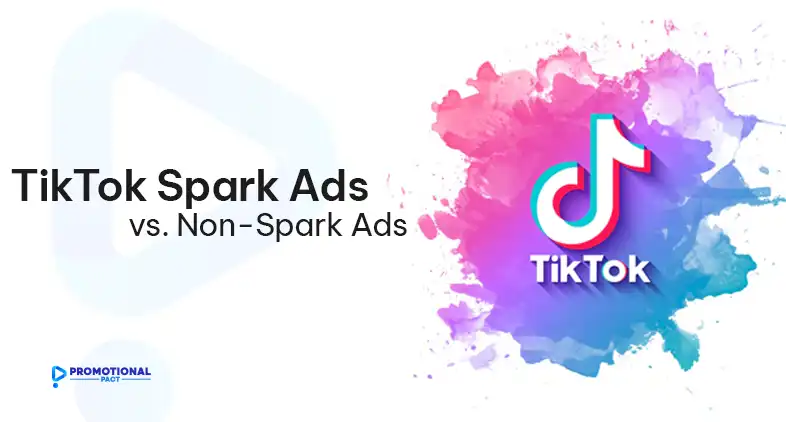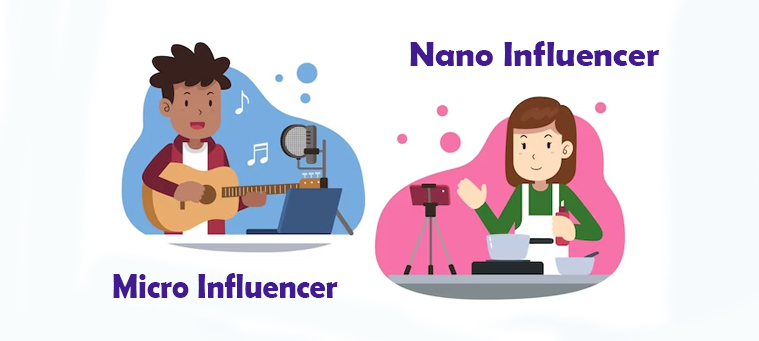
Known for its short, engaging videos, TikTok offers a unique environment where creativity thrives, making it a prime space for brands to reach new audiences. As TikTok continues to grow, so does its advertising potential, offering various formats that allow brands to connect with users in authentic and impactful ways.
TikTok offers two primary advertising options: Spark Ads and Non-Spark Ads. Spark Ads are relatively new but have quickly gained popularity for their ability to amplify organic content. On the other hand, Non-Spark Ads encompass traditional ad formats that provide full creative control to brands. This article aims to compare these two advertising options, helping you decide which is best suited for your campaign objectives.
What Are Spark Ads
Spark Ads are a unique ad format that leverages existing, high-performing organic TikTok posts. Unlike traditional ads, which are created specifically for promotion, Spark Ads use content that is already resonating with audiences, whether it’s from a brand’s own TikTok account or from another user.
One of the key characteristics of Spark Ads is their ability to boost the reach and engagement of content that has already proven successful. Because Spark Ads are based on real TikTok posts, they carry a sense of authenticity that traditional ads often lack.
Benefits of Spark Ads
Spark Ads offer several distinct advantages that make them an attractive option for marketers:
- Increased Ad Performance: Because Spark Ads are based on content that has already resonated with TikTok users, they tend to perform better in terms of engagement.
- Reduced Unintended Clicks: Traditional ads can sometimes lead to accidental clicks. Spark Ads, are less likely to result in unintended clicks because they are seamlessly integrated into the TikTok feed.
- Improved Customer Loyalty: By leveraging user-generated content or high-performing posts, Spark Ads help brands build trust and loyalty.
- Proven Audience Resonance: One of the most significant benefits of Spark Ads is their ability to use content that has already proven to resonate with audiences.
How to Create Spark Ads
Creating Spark Ads involves a few key steps, all aimed at selecting and optimizing content that will drive engagement. First, identify high-performing organic posts that align with your campaign goals.
Once you have selected the content, you can initiate the Spark Ad creation process through TikTok’s Ads Manager. This involves linking the post to your ad account and setting parameters such as targeting, budget, and duration. It’s crucial to optimize the ad by adding relevant hashtags, captions, and calls-to-action (CTA) that encourage users to interact with the content.
Best Practices for Spark Ads
To maximize the effectiveness of Spark Ads, consider the following best practices:
- Choose Relatable Content
- Prefer Micro-Influencers Over Celebrities
- Match Your CTA with Your Goal
- Rely on Data to Optimize Campaigns
What Are Non-Spark Ads
Non-Spark Ads on TikTok include several traditional ad formats, each offering different benefits and use cases. For example, in-feed ads are short video ads that appear in the user’s feed as they scroll through content. They are similar to regular TikTok videos but come with the added benefit of including a CTA.
Branded effects on the other hand are custom filters, lenses, and effects that users can interact with. These allow brands to create immersive and interactive experiences that encourage user participation.
Brand takeovers are full-screen ads that appear when users first open the TikTok app. It offers a higher-impact way to capture the user’s attention immediately. This makes branded takeovers ideal for a major product launch or brand announcement.
Finally, hashtag challenges are promoted challenges that encourage users to create and share content around a specific theme or hashtag. It’s a powerful way to drive user-generated content and community participation.
Benefits Non-Spark Ads
Each type of Non-Spark Ad offers unique advantages:
- In-Feed Ads provide wide reach and maintain a native feel while allowing full creative control.
- TopView and Brand Takeovers offer unparalleled visibility and immediate impact, ideal for launching new products or campaigns.
- Branded Hashtag Challenges drive user engagement and have the potential to go viral, generating substantial user-generated content.
- Branded Effects create interactive experiences that users can share, extending the reach of your brand organically.
How to Create Each Type of Non-Spark Ad
Creating Non-Spark Ads involves different processes depending on the ad type:
- In-Feed Ads: To create an In-Feed Ad, start by producing a short, engaging video that aligns with TikTok’s dynamic style. Once the video is ready, you can upload it to TikTok’s Ads Manager, where you can set targeting options, budget, and a CTA.
- Branded Effects: The process involves designing a custom filter or effect that users can apply to their videos. Once the effect is live, it can be promoted through TikTok’s ad platform.
- Brand Takeovers: To create a Brand Takeover, you need to design a full-screen image or video that will appear when users open the app. This format is best suited for campaigns with a broad reach and significant budget.
- Hashtag Challenges: Launching a Hashtag Challenge involves creating a unique hashtag and promoting it through TikTok’s ad platform. The challenge should be easy to participate in, with clear instructions and incentives for users to join in.
Best Practices for Non-Spark Ad
To ensure the success of Non-Spark Ads, follow these best practices:
To optimize Non-Spark Ad performance:
- Create engaging, platform-native content that doesn’t feel out of place on TikTok.
- Incorporate trending sounds, effects, and hashtags to increase relevance and engagement.
- Ensure your ads are optimized for mobile viewing, with clear visuals and legible text.
- Include clear and compelling calls to action that align with your campaign objectives.
- Regularly test different creative elements to identify what resonates best with your audience.
Spark Ads Vs Non-Spark Ads: What’s the Difference
There are several key differences between Spark Ads and Non-Spark Ads that marketers should consider when planning their campaigns. We’ll discuss that right after this short and quick comparison table:
| Feature | Spark Ads | Non-Spark Ads |
| Content Source | Uses existing TikTok posts | Requires new creative |
| Format | Feels native in the TikTok feed | Includes formats like In-Feed, Takeovers |
| Engagement | Higher due to authenticity | Varies; more customizable |
| Cost | More cost-effective | Can be more expensive |
| Creative Control | Limited | Full control |
| Best For | Amplifying successful organic content | New product launches, broad campaigns |
Content Source
Spark Ads utilize existing, high-performing content from TikTok, while Non-Spark Ads require the creation of new ad creatives. This means Spark Ads are often more authentic, as they rely on content that users have already engaged with.
Ad Format and Presentation
Spark Ads appear within the native TikTok feed, making them feel more like organic content. Non-Spark Ads, on the other hand, offer a variety of formats, such as full-screen takeovers and branded effects, allowing for more customization and creative control.
Engagement and Interactivity
Spark Ads tend to see higher engagement due to their authentic and native feel. Non-Spark Ads, while potentially more disruptive, offer greater opportunities for creativity and interactivity through features like Branded Effects and Hashtag Challenges.
Cost and Budget Considerations
Spark Ads can be more cost-effective because they leverage existing content, reducing the need for expensive creative production. Non-Spark Ads, especially formats like Brand Takeovers, may require a larger budget but can deliver significant impact and reach.
Targeting and Reach
Both Spark Ads and Non-Spark Ads offer robust targeting options, but the reach may differ depending on the ad format. Spark Ads are often more effective at reaching engaged audiences, while Non-Spark Ads, like Brand Takeovers, can deliver broad exposure to a wide audience.
When to Choose Spark Ads
Spark Ads are ideal for campaigns that aim to amplify content that is already performing well. If you have a TikTok post that has gained significant traction, using it as a Spark Ad can help you reach an even larger audience. Spark Ads are also a great choice when you want your ad to feel native and authentic, blending seamlessly into the TikTok feed. This makes them particularly effective for brands looking to build trust and loyalty with their audience.
When to Choose Non-Spark Ads
Non-Spark Ads are best suited for campaigns that require specific ad formats or creative control. If you don’t have existing content to promote or need to create a highly customized ad experience, Non-Spark Ads offer the flexibility you need. For example, if you’re launching a new product and want to make a big impact, a Brand Takeover or Hashtag Challenge might be the right choice. These formats allow you to capture attention and drive user engagement on a large scale.
Summary
In summary, consider Spark Ads when you want to boost the reach of high-performing content and build a more authentic connection with your audience. Opt for Non-Spark Ads when you need creative control and the ability to create customized ad experiences. Regardless of the ad type you choose, TikTok’s advertising platform offers powerful tools to help you reach your marketing goals.

